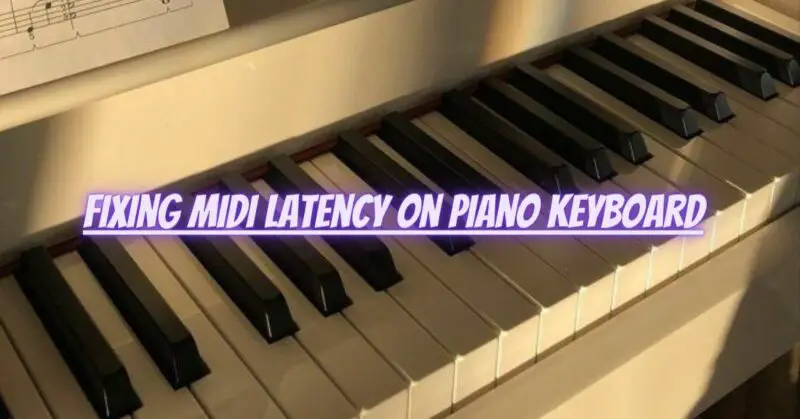MIDI latency is a common issue that can affect the performance and overall experience when playing a piano keyboard connected to external devices such as computers or sound modules. It refers to the delay between pressing a key on the keyboard and hearing the corresponding sound through the connected device. This delay can be frustrating and disrupt the natural flow of your music. In this article, we’ll explore the common causes of MIDI latency on a piano keyboard and provide practical solutions to address and minimize this problem.
1. Buffer Settings:
Buffer settings in your MIDI software or digital audio workstation (DAW) can significantly impact MIDI latency.
Solution:
- Adjust the buffer size in your MIDI software or DAW to find the optimal setting. Smaller buffer sizes can reduce latency, but they may put more strain on your computer’s processing power.
- Experiment with different buffer sizes to find the right balance between low latency and stable performance.
2. Processing Power and RAM:
Insufficient processing power or low RAM on your computer can contribute to MIDI latency.
Solution:
- Ensure that your computer meets the minimum system requirements for running your MIDI software or DAW.
- Close unnecessary background applications to free up processing power and RAM.
3. MIDI Cable Quality:
Using low-quality or damaged MIDI cables can cause signal degradation and increase latency.
Solution:
- Invest in high-quality MIDI cables to ensure a reliable and low-latency connection between your piano keyboard and the external device.
4. MIDI Interface:
The type and quality of your MIDI interface can affect MIDI latency.
Solution:
- If you’re experiencing high latency, consider upgrading to a higher-quality MIDI interface with lower latency capabilities.
5. Firmware and Driver Updates:
Outdated firmware or drivers for your MIDI interface or sound card can lead to latency issues.
Solution:
- Check the manufacturer’s website for any available firmware or driver updates for your MIDI interface or sound card.
- Install the updates to ensure optimal performance and compatibility.
6. Latency Compensation:
Many MIDI software and DAWs have latency compensation features that can help minimize MIDI latency.
Solution:
- Enable the latency compensation feature in your MIDI software or DAW to compensate for the delay and align the timing of your MIDI signals.
7. Direct Monitoring:
If your audio interface or sound card supports direct monitoring, using this feature can reduce MIDI latency.
Solution:
- Enable direct monitoring in your audio interface settings to bypass the computer’s processing and hear your keyboard’s sound directly.
8. ASIO Drivers:
Using ASIO (Audio Stream Input/Output) drivers can significantly reduce MIDI latency on Windows-based systems.
Solution:
- Install ASIO drivers for your audio interface or sound card, as they are specifically designed for low-latency audio processing.
Conclusion:
MIDI latency on a piano keyboard can be a frustrating issue, but with the right adjustments and optimizations, you can significantly improve the response time and overall performance. By adjusting buffer settings, ensuring sufficient processing power and RAM, using high-quality MIDI cables and interfaces, updating firmware and drivers, and employing latency compensation and direct monitoring features, you can reduce MIDI latency and enjoy a seamless and responsive playing experience. Additionally, regularly checking for software and hardware updates will ensure that you’re using the latest optimizations and improvements for your MIDI setup. With these solutions, you can make MIDI latency a thing of the past and fully focus on your musical creativity and expression.


